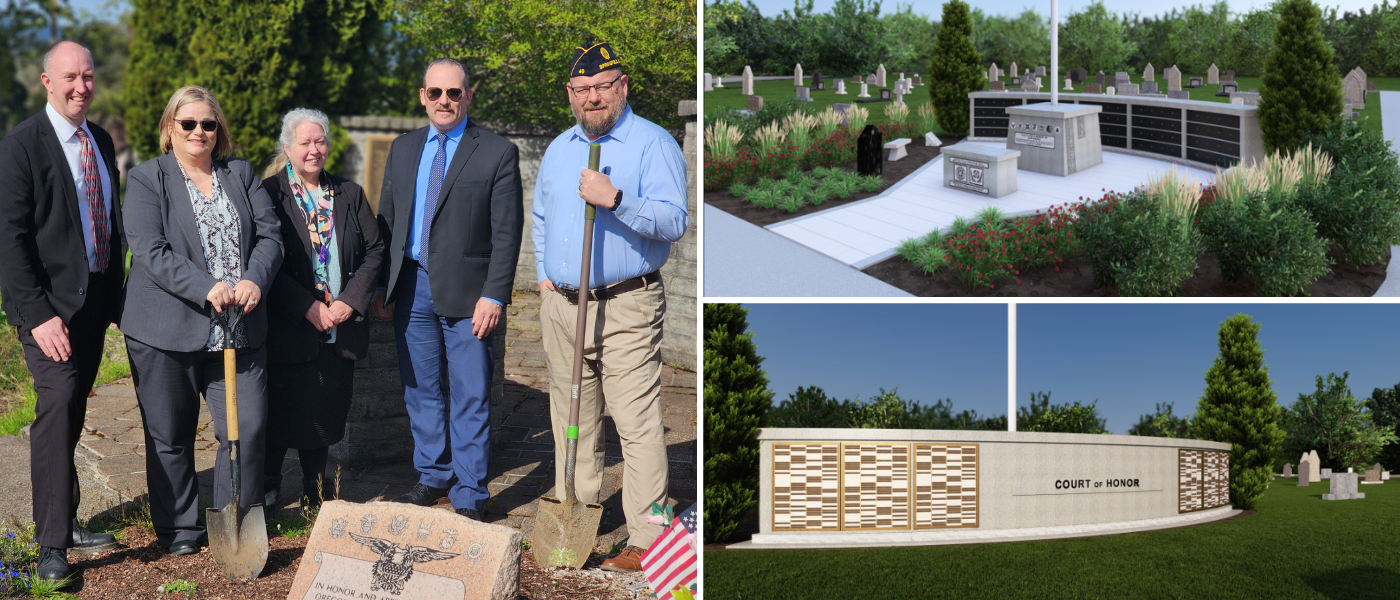Your Life, Your Funeral
Erika Dillman comes by her interest in death naturally.
“My grandparents were in the business,” she says. “They sold embalming fluid.”
When she was 8, her grandparents took her to a funeral convention — what kid wouldn’t be thrilled? — where she picked out a particular casket in which she wanted to be buried.
“I knew your funeral was something you had to plan for, to buy things for,” she says. “Now, it’s the party aspect I’m obsessed with.”
Dillman has written “The Party of Your Life: Get the Funeral You Want by Planning It Yourself” (Santa Monica Press). In it, she not only makes a good case for a memorable, personalized funeral, but also explains how to pull it off and why it’s becoming more common.
“People want more control. They want a more personal occasion. Those are the two main things,” she says. “They want to personalize it and have something meaningful for them. … They want something more than a church service and burial.”
She says she hopes the main thing that people take away from the book is the notion that it’s OK to do what they want, not what survivors might think they would have wanted.
“Your survivors aren’t going to go into a funeral home and say, ‘We’ll take that cardboard casket for 150 bucks.’ But you can say that,” she says. “You don’t have to put your money in the ground. You can have a really sparkly disco ball at your party instead. A typical casket is $2,000. That could buy a lot of gin, a lot of vegan nut rolls, a lot of items for gift bags.”
Gin? Vegan nut rolls? Gift bags? At funerals?
Yep, and custom T-shirts and dancing and boat rides too. Hey, it’s your party.
“You’ve gone through all the trouble of dying, you deserve better,” Dillman says. “In order to get that, you need to do some work up front.”
Your exit strategy: Start planning now. You may be 25 and statistically have another 50 or 60 years before your expiration date, but life is funny that way.
Figure out what you want and don’t want. Burial or cremation? Or maybe be sent off on a flaming boat, a la Kirk Douglas in “The Vikings.” Maybe buy a cemetery plot, line up a funeral director and minister or priest, and set aside the clothes you want to wear. Do your homework and be an informed consumer.
Also worth noting: You can save a bundle by making the plans yourself instead of leaving them for grieving survivors who can easily be rushed into unnecessary expense.
There are, of course, legal strings to tie up. Get your affairs in order, have a will, gather important papers. Arrange for those embarrassing photos to be destroyed.
Party time! Now start thinking about your farewell soiree, an event that is all about you. Draw up your guest list (yes, you can exclude people). Choose your music (one of the best parts of planning your service, Dillman says) and menu. Write a farewell message, or maybe even a skit. Gift bags for the mourners? Why not?
A somber religious ceremony is just fine if that is you. But if that’s not you, forget it. Set aside money for a big party. Or rent a band. Or take all the mourners to a ballgame or picnic. Make it a three-day party. Or make it a quiet gathering at your home.
Don’t fret about timing. Such a memorial — a celebration of you — can be held days or even weeks after you depart.
“I say wait at least a month for the party,” Dillman says. “People out of town need 21 days for cheaper tickets. People have to learn their lines, get the lighting right.”
A service can be held sooner, and it can be somber or more upbeat. Whatever you like. But try to get guests involved.
“I saw a funeral invitation once, and it was orange,” Dillman says. “It had a photo of him and said the location of the funeral, the date and time, and a little note. Please wear orange because it was this man’s favorite color. Sweet. It was simple and direct and gave me an idea of this man. And then all the guests can feel they’re doing something meaningful just by wearing orange.”
Get it right: The perfect funeral? Dillman couldn’t name one, but she had an example of a good one: the guy in Massachusetts who had an ice cream truck at his.
“What a great message. If you have a great funeral that’s fun, you’re telling guests, I accept my death. By doing that, I believe you’re helping your guests accept it. You’re setting the tone. I’m OK with this, so they’re OK with it.”
How it all happens: Once you have your plan, you will need someone to carry out your wishes. This is your death buddy.
Choose someone who is willing to take the responsibility and understands fully what you want. Doesn’t hurt to have a backup death buddy too. You also need a funeral posse. These are the worker ants who will stuff those gift bags, will make sure security is hired to keep your ex from attending, will distribute the Whoopee cushions before the service. Tell them your plans and make sure they’re on board.
“When you die, people are sad and they want to do something for your survivors,” Dillman says. “If you have left plans, it gives them a feeling of helping. And the more you demand the better. They’ll chuckle, ‘She’s dead and still bossing us around.’”
Also think ahead. Dillman has a backup team — the children of her team members — because she expects to live to 100. “I told them, it’s if I outlive your parents. We have to stay in touch. I have three kids on my team and they love it. It’s another level of our friendship.”
If you have nobody, you can hire someone, a death midwife or a funeral director, to carry out your wishes.
Your obituary: Don’t leave it to some overworked funeral home worker or a newspaper intern. They don’t know you. Better to do it yourself or have your best friend write it. Interview other friends and relatives. Make it sing with personal information.
Now, wait: When your plans are all made, put everything in writing, and stash it in your funeral box, a repository for everything. Make sure everyone on your team knows its location so they can get to it quickly when the time comes. And someday it will.



